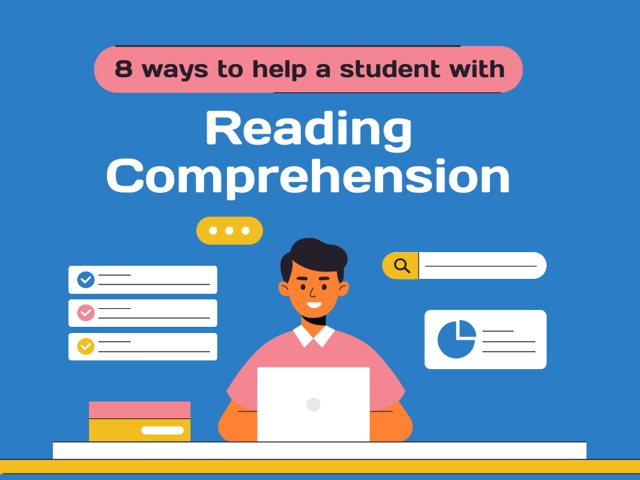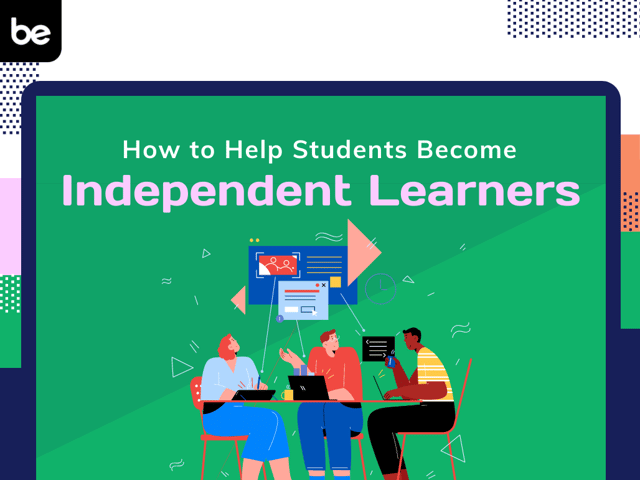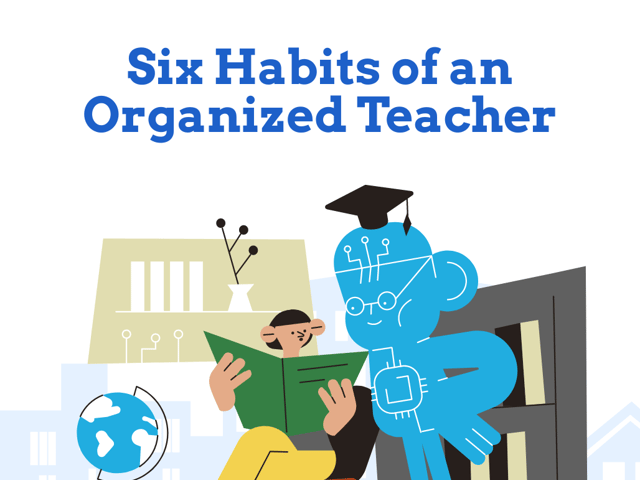
How to Help a Student with Reading Comprehension
Many readers take for granted the ability to read and understand a text. It becomes second nature to move eyes across the page, make sense of the words, and make connections to the ideas being presented. But reading comprehension can be a struggle for some readers and they may feel a disconnect between moving their eyes across the page and processing what the words say, understanding the meaning or the message, and integrating that knowledge into their own lives.
Here are some tips to help students with reading comprehension.
Set a Clear Purpose for Reading
It’s hard to know what’s going on or what you’re supposed to glean from reading if you don’t know why you’re reading it. Teachers can help guide students to set a purpose for reading by previewing the text with them. What does it look like a text is going to be about? How do they determine that? Why should we read this text?
Addressing these basic questions with answers more meaningful than “because it was assigned to me” will help students begin to understand what they are reading for. If it’s an informational text, they are reading to learn about a specific topic. If it’s a narrative text, it’s going to tell a story meant to entertain the reader. If it’s an argumentative or persuasive text, the author wants to convince the reader of something or at least get them to consider a position with regard to a topic.
Offer Support Before, During, and After Reading
Strategies like having students preview a text before they read it, pre-teaching vocabulary or concepts students may find challenging, and encouraging students to construct a KWL chart (listing what they already know, what they want to know, and what they learned from a reading selection) can help prepare students to read, considering what they already know. It also prepares them for what they are about to encounter. Creating story maps, annotating and questioning the text, or identifying the main ideas on a graphic organizer can help students understand and interact with the text as they read. After reading, asking students to draw a picture that summarizes the story, writing a summary statement or short paragraph, or allowing an opportunity for students to write a reflective response about what they just read will help cement their understanding.
Talk About It
Class discussions, or discussions with partners or small groups, can also help students better understand a reading or make clearer sense of where they stand with regard to a text. Often, the comments of another classmate or a question posed by another reader can trigger new thinking for students.
Encourage Students to Identify Their Struggles
It’s easy for students to throw up their hands in frustration and decide they “can’t” do something. Help students work through these moments of frustration by allowing for regular metacognitive reflection opportunities whereby students can identify exactly what part of the task they feel they “can’t” do so that you can help them employ strategies to help them through those challenges. “I don’t get it,” will be a common response, but guiding questions that require text-based answers and then extend to more synthesis or application responses can help you determine where students begin to get off-track in their comprehension.
Promote Alternate Reading Activities
Many of these come under the umbrella of “read with a friend”. Sometimes reading “sticks” better when you’re not having to read and understand at the same time. Reading aloud to a friend (especially a patient four-legged one who won’t judge) can help students slow down, and it gives them more time to concentrate on the words so they can process what they are saying. Listening to text being read by someone else (and following along as they listen) can also help students concentrate on what the text is saying as opposed to how to pronounce a word. This could be done by listening to the teacher read, listening to a classmate read, or listening to a recording of the text.
Teach the Value of Rereading
Reading is not a one-and-done activity. It’s okay (and encouraged!) to read things multiple times, and with each reading, the brain is likely to pick up more information it may have missed the first time through. Many students think there is a stigma to rereading a text: why didn’t you understand it the first time? But scholars regularly read and reread things to enhance their understanding, and there should be no shame in rereading a text. Incorporating multiple reads of things within your class can help debunk the myth that rereading something means you weren’t “smart” enough to understand it the first time.
Model Good Reading Practices
Explain to students how you work through a challenging text. What questions do you ask? How do you use the visual elements on a page to help you make meaning? Engaging in a think-aloud as you read a text with students will help them understand how to pause and employ strategies to increase their understanding.
Stay the Course
It is important to note that students may struggle with reading comprehension for a number of reasons. It may be that they are disinterested in the topic or task, or there may be underlying learning disabilities that make it challenging for them to unlock the key to reading success. Thus, it is important to identify when a student struggles with reading comprehension and give them tools to help, not just hope they’ll catch up on their own.
Reading is a wonderfully valuable skill but its benefits cannot be truly understood if there is a lack of comprehension. Encourage reluctant readers to continue to practice, as the more they read, the more opportunities they have to use their new reading comprehension strategies and become better readers.

Keep Reading

Georgia Assessments for the Certification of Educators Blog
How to Help Students Become Independent Learners
As educators, our number one goal is to help students become independen…

Georgia Assessments for the Certification of Educators Blog
Six Habits of an Organized Teacher
Those who envision education as neat rows of quiet students dutifully w…

Georgia Assessments for the Certification of Educators Blog
Nine Qualities of a Good Teacher
Teachers wear many hats each day. They are instructor, coach, cheerlead…